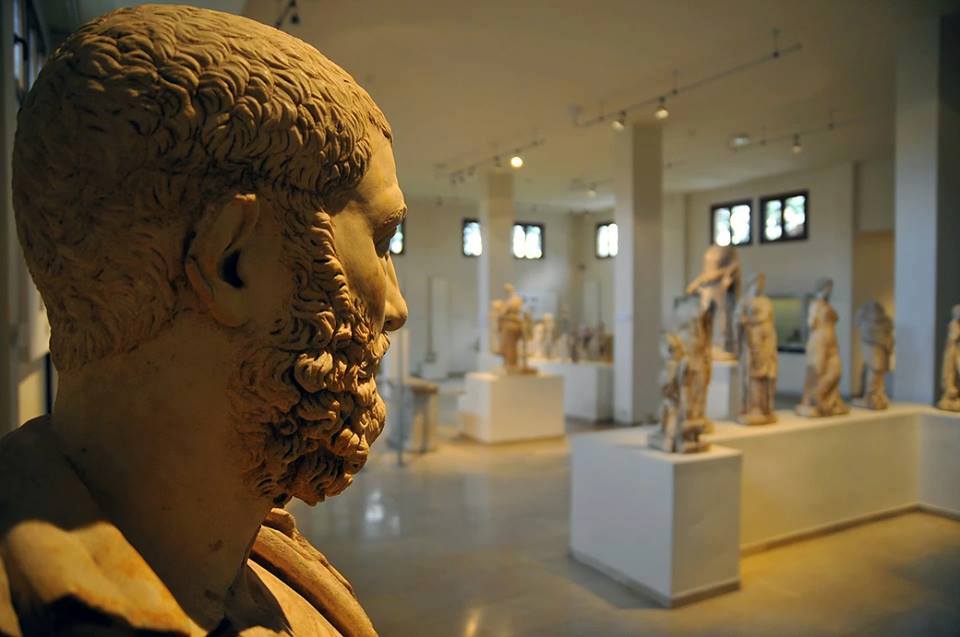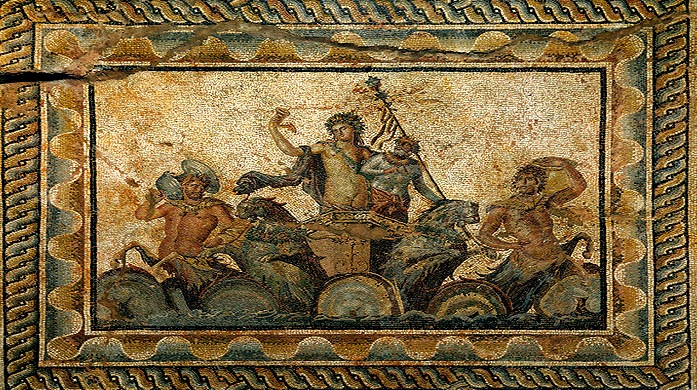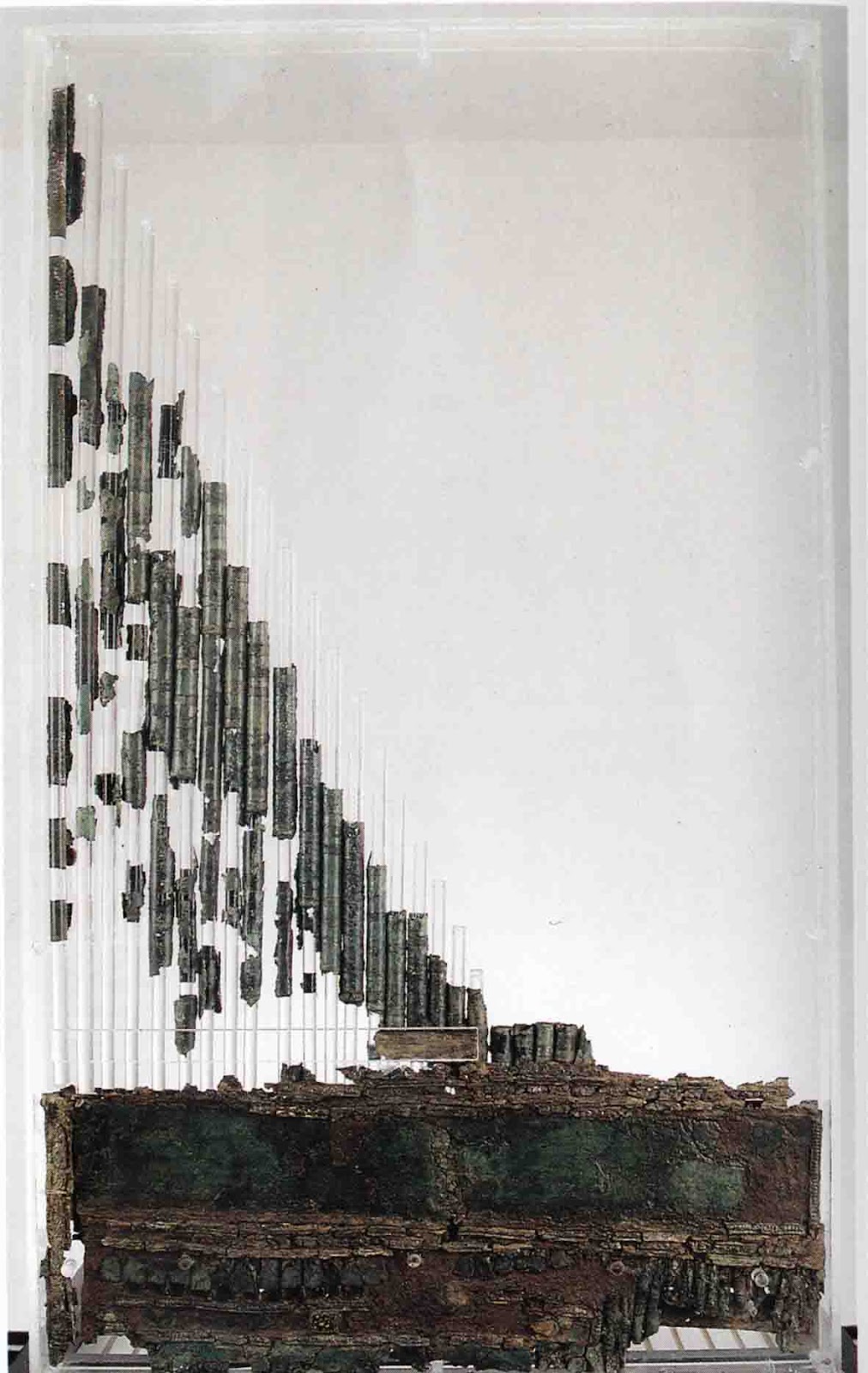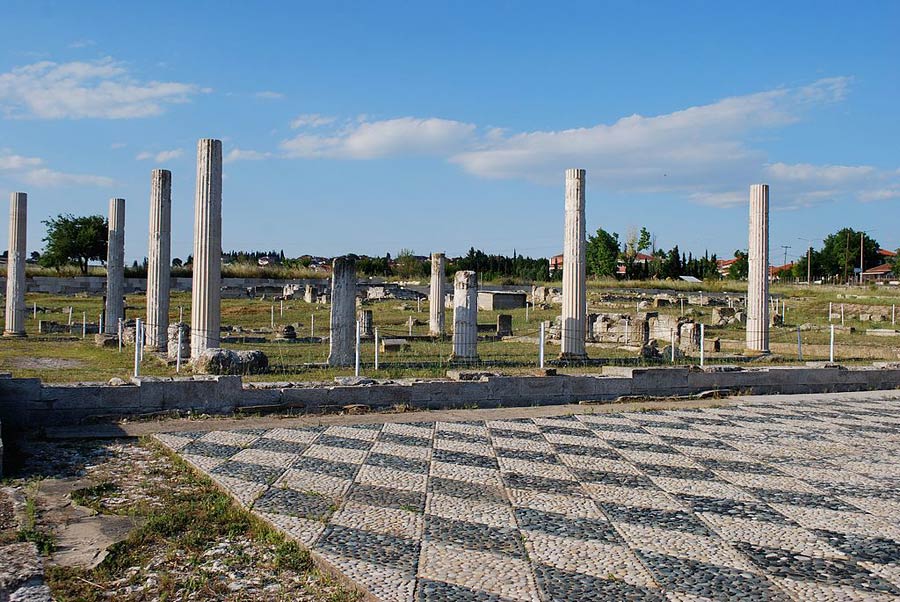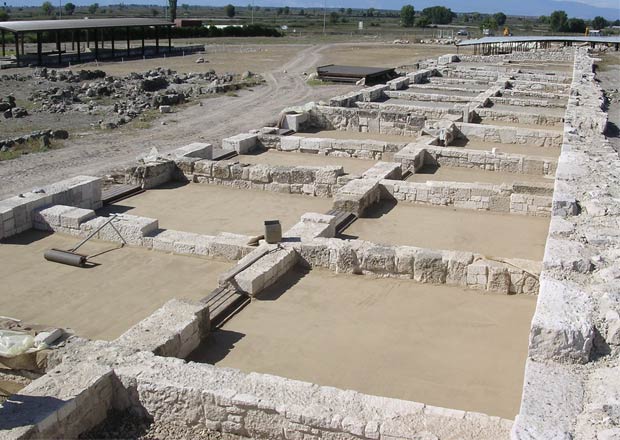Dion, situated at the feet of mount Olympus, was the “sacred place” of the Ancient Macedonians. Dion owes its name to the most important Macedonian sanctuary dedicated to Zeus (Dios, “of Zeus”), leader of the gods who dwelt on Mount Olympus.
Today Dion comprises the largest archaeological park in Greece, renowned both for its monumental antiquities and imposing nature. It occupies an area of 150 hectares, of which nearly 50 hectares belong to the urban area and 50 hectares to the sanctuaries.
Philip II and Alexander the Great celebrated victories here, and Alexander assembled his armies and performed magnificent sacrifices here on the eve of his campaign to Asia in 334BC.
The Archaeological Museum, is located half a kilometer west of the archaeological park, in the modern village of Dion. Here the finds of ancient Dion and other archaeological places are exhibited.
Mosaic of Dionysos and Hydravlis are two of the most important exhibits.
Hydravlis is the first keyboard musical instrument in history, (3rd century BC). It is the earliest example of the Hydravlis organ which was the forerunner of church organs.
Vergina is best known as the site of ancient Aigai, the first capital of Macedon. Aigai retained it’s importance even when Pella became the capital. Philip II build a palatial complex of distinctive monumentality and luxury, sizing XXX bigger than Parthenon (Athens). It was there when in 336 BC Philip II was assassinated, in the theatre of the complex, and Alexander the Great was proclaimed king.
To the south of River Haliacmon, in the “land of Macedon”, as described by Herodotus, on the foothills of Pieria, the ancient “Macedonian mount”, lays Aigai, the old capitol of Macedon, the land with many goats (“Aigai” in ancient Greek means “goats”).
In 1976, the renowned archaeologist Professor Manolis Andronikos unveiled the Royal Necropolis of Aigai, including the tomb of Philip II, father of Alexander the Great. There the archaeologists found intact by time, the Golden Larnax and the Golden Grave Crown of Philip II. Today the palace o Aigai is partially reconstructed while the site of the necropolis was converted to a museum.
Aigai has been awarded UNESCO World Heritage Site status as “an exceptional testimony to a significant development in European civilization, at the transition from classical city-state to the imperial structure of the Hellenistic and Roman periods”.
Pella is an ancient city located in Central Macedonia, Greece, best known as the historical capital of the ancient kingdom of Macedon and birthplace of Alexander the Great. In the beginning of the 4th century BC Pella was the largest Macedonian city.
Overall, archaeologists have uncovered 1,000 tombs since the year 2000, but these only represent an estimated 5% of the site. One of the tombs was the final resting place of a warrior from the 6th century BC with a bronze helmet, a gold mouth plate, weapons and jewelry.
The size of the complex indicates that, unlike the palace at Vergina, this was not only a royal residence or a grandiose monument but also a place of government which was required to accommodate a significant portion of the administrative apparatus of the kingdom.



